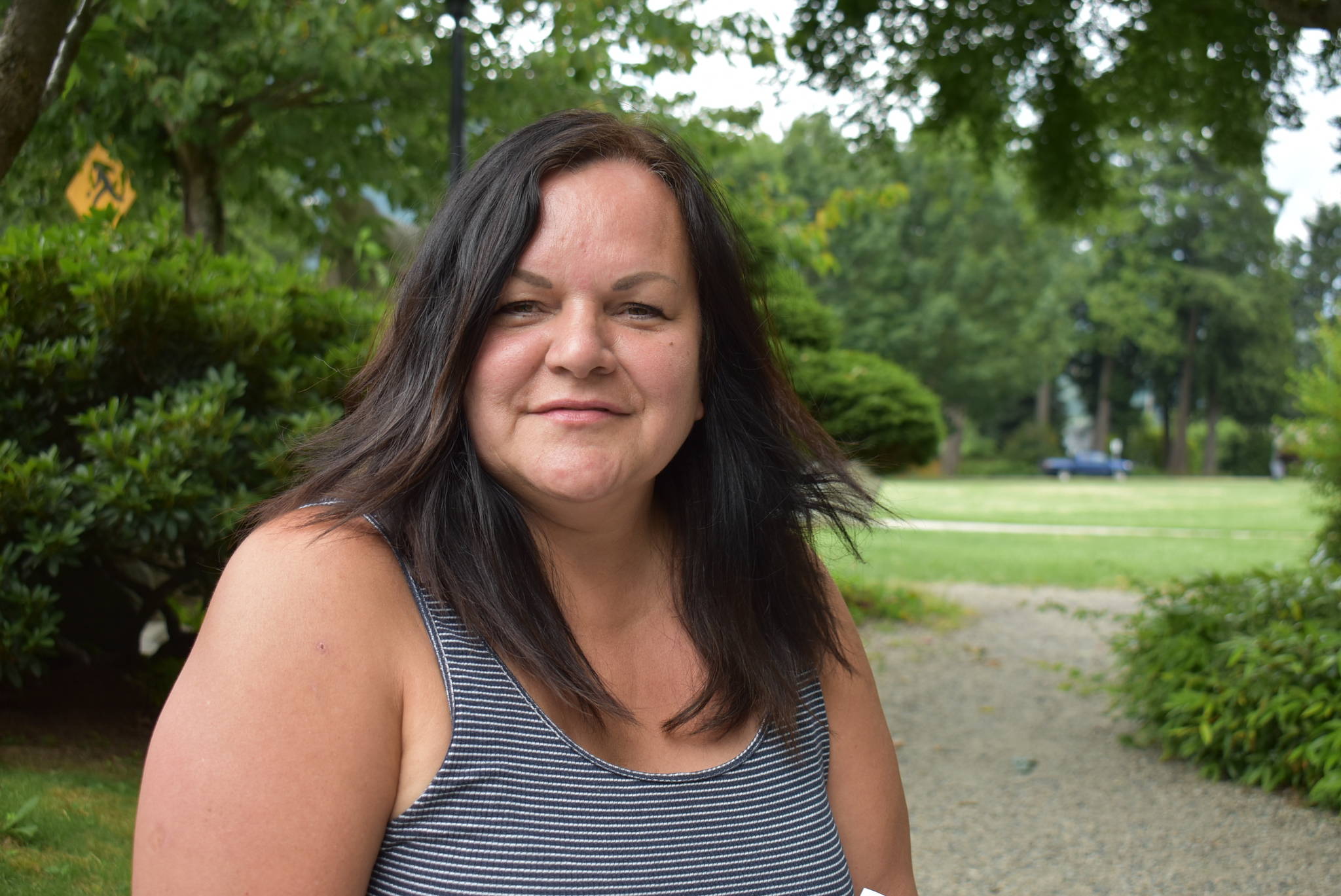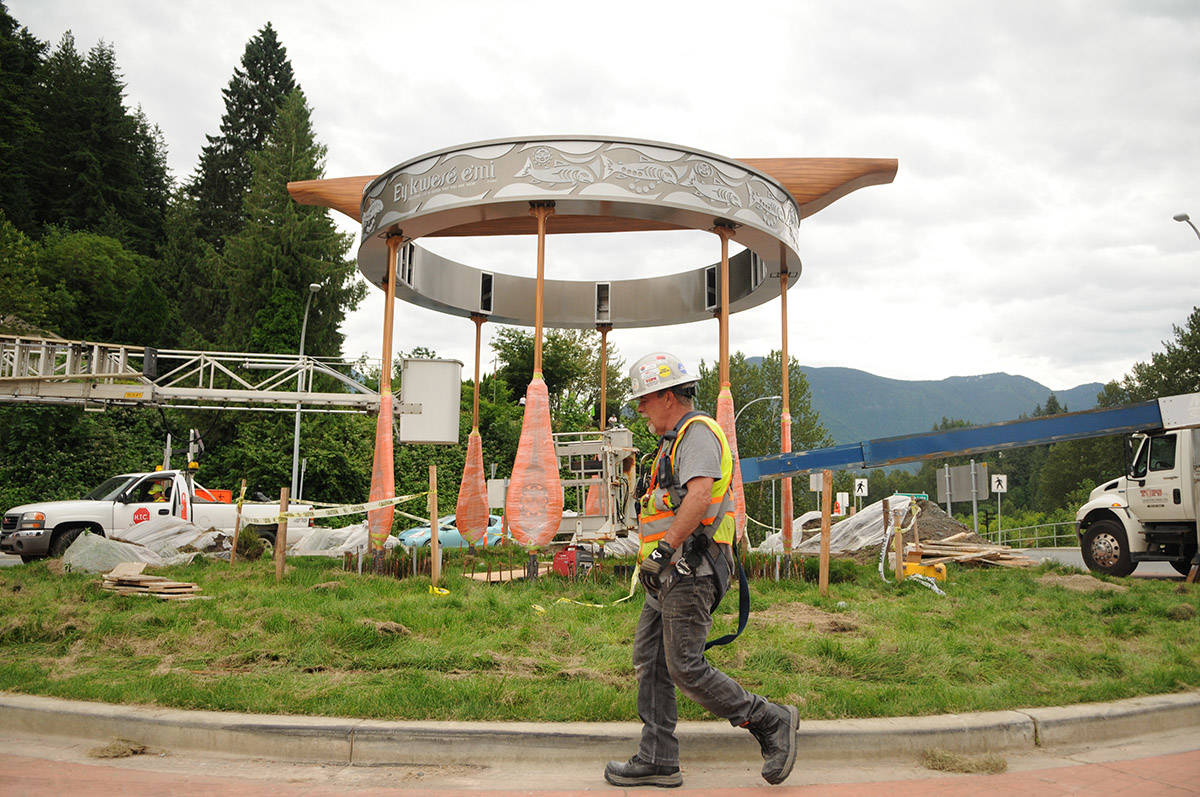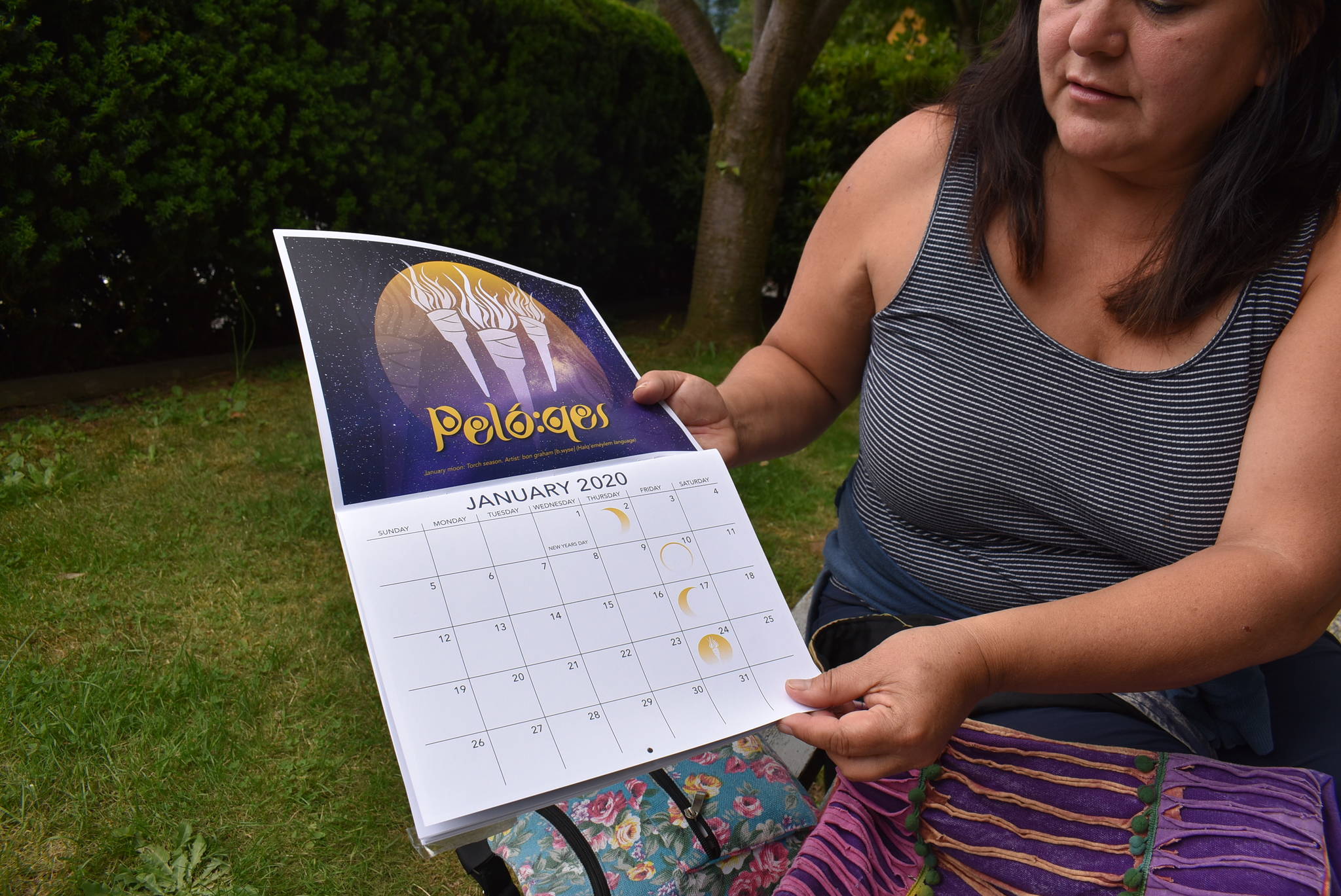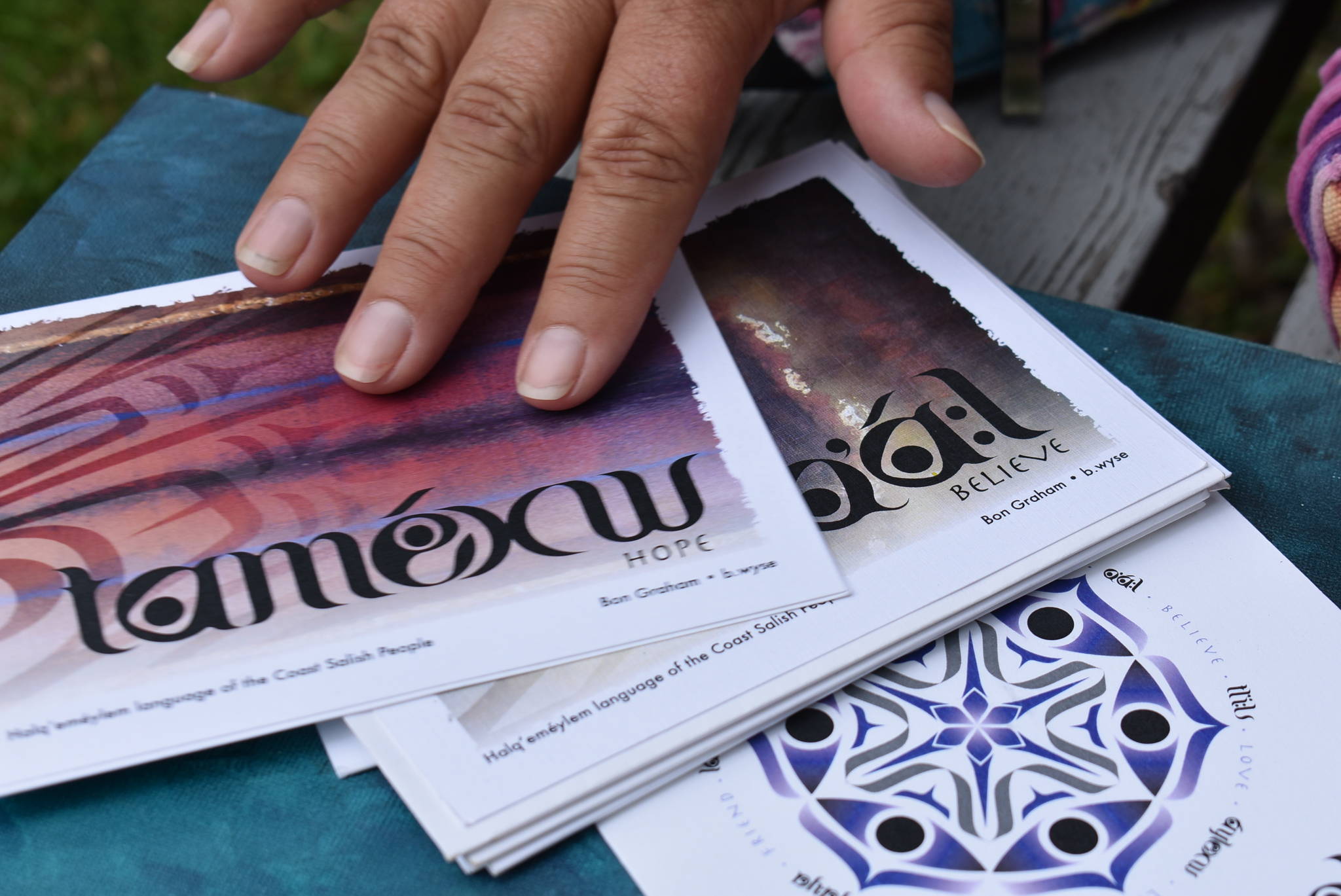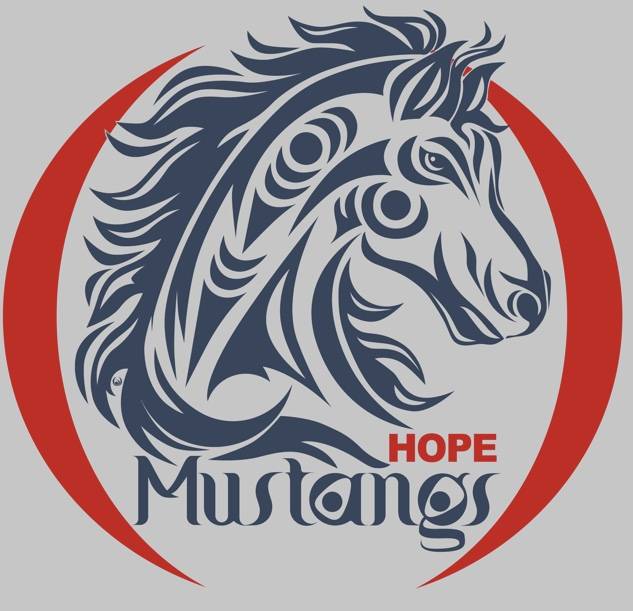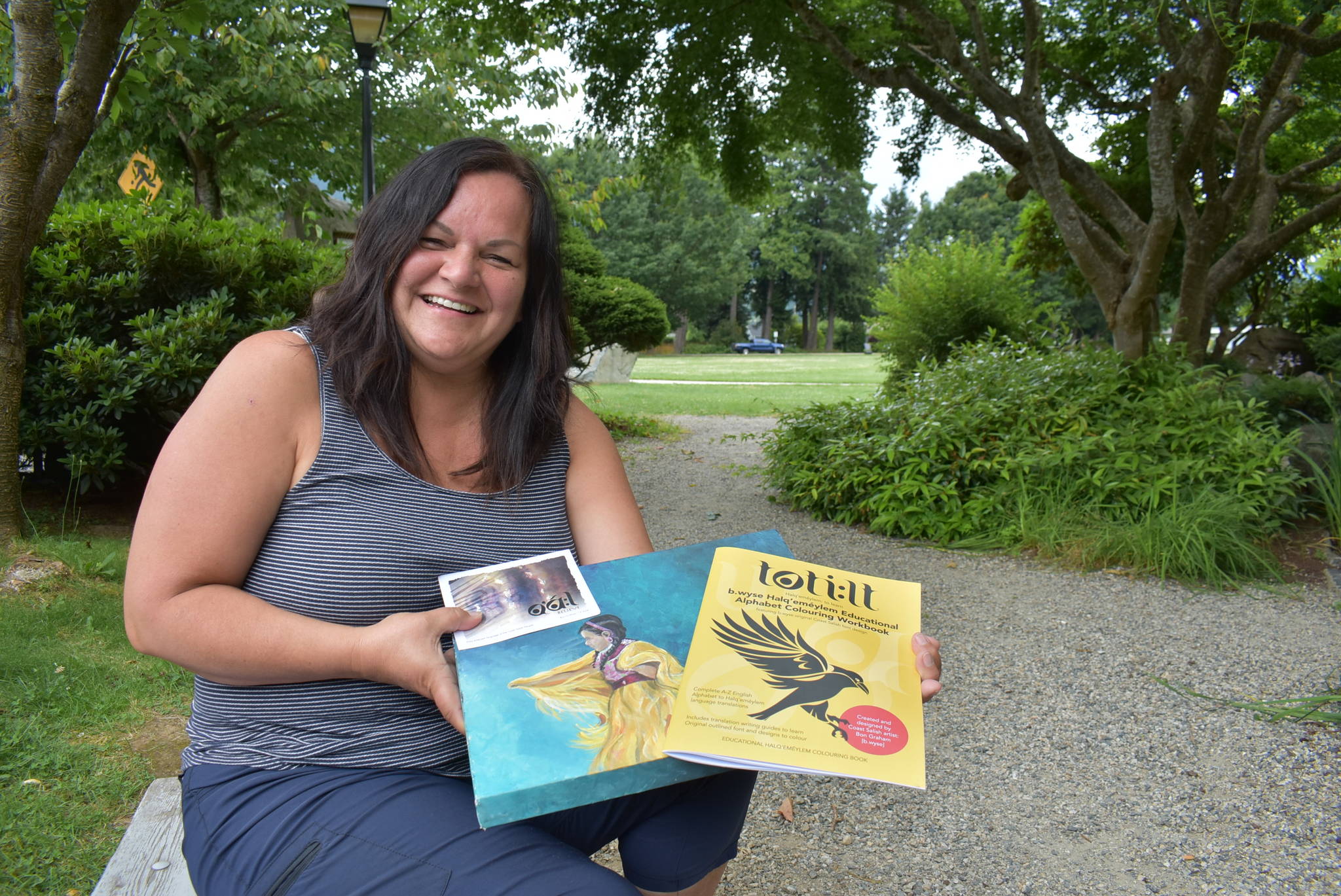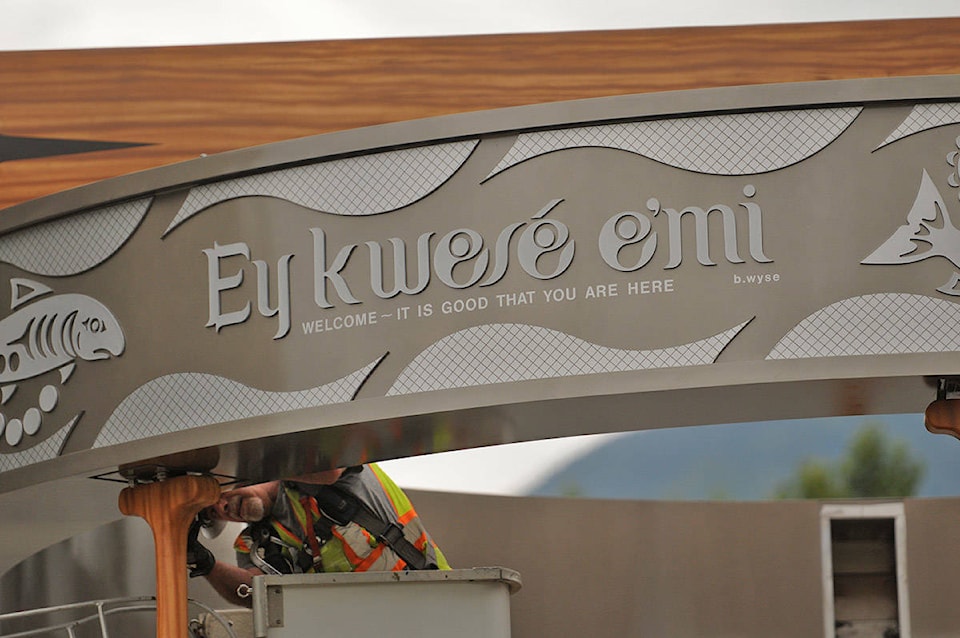A new public work of art at the Vedder Road roundabout in Chilliwack is co-created by Hope’s own Bonny Graham together with Squiala First Nation Chief David Jimmie.
Designed in consultation with the Stó:lo Nation Chiefs Council and Ts’elxwéyeqw Tribe, the piece features a traditional canoe of Stó:lo and Coast Salish heritage sitting atop a stainless steel ring held up by eight paddles. The ring is engraved with text in Halq’eméylem that reads “Ey kwesé é mi,” meaning “It’s good that you are here…welcome” encircled by a salmon and wave design.
It is the first time Bonny Graham has seen her art on such a massive project. The born and raised Hopeite, who once again lives back home, has been a graphic artist for over a decade and she is well-known locally for her incorporation of Halq’eméylem words into her artwork.
It all began with a request from Graham’s niece asking her to create a tattoo design for her, before the niece took off travelling around the world. “It was at that point that I realized that the Halq’eméylem language was at the brink of extinction, there were very few Elders left that were fluent speakers,” she said. At this point, around 12 years ago, the revitalization of the language was a far cry from what it is now with the ability to take a university program in Halq’eméylem and its presence in public school classrooms.
What began with one word eventually became a unique font created by Graham for all of the 18 letters of the Halq’eméylem alphabet. (She has expanded the font to all letters of the English alphabet over the past year.)
With guidance from Halq’eméylem speakers Siyamiyateliyot Elizabeth Phillips, the only person alive today who has spoken the language since infancy, and Eddie Gardner, Graham began a two-year process to develop the Coast Salish-inspired font.
Read more: Siyamiyateliyot Elizabeth Phillips receives UFV honorary degree
The letters in the font are meant to fit together in such a way that they form a beautiful piece of art. “Coast Salish and Sto:lo artwork in particular is based on, basically, a drop of water that ripples out,” she said. “So you have your circles and then you have your crescents and your pulled crescents and your shapes that come off of that. And that’s what the artwork is meant to look like.”
In her work, Graham also pulls from a dictionary created by scholar Brent Galloway in conversation with Sto:lo Elders. Galloway has since passed away, but Graham was able to receive his blessing to do this work from him before he passed.
Read more: Brent Galloway’s Dictionary of Upriver Halkomelem
Her designs have been featured at the Vancouver 2010 Winter Olympics, which Graham says was a real catalyst for the ‘reigniting of Indigenous art and culture’, as well as at the Chilliwack General Hospital’s emergency room, the University of the Fraser Valley, the Sto:lo Cultural Centre and the new Hope Mustangs logo created this past school year. Her works have been printed on art cards, a 13 moons calendar (a calendar which charts the full moons and the Sto:lo practices during these moons) and most recently a colouring book.
Graham also paints, capturing the movement and colour of a powwow with vibrant acrylic on canvas works. “I’m constantly surprised by the different avenues and roads that I’ve taken that are completely unexpected,” she said of her evolving artistic practice.
It has also been a process of connecting her to her Sto:lo roots in Chilliwack, which stem back to her grandfather Charles Prest (son of William Prest, and Mary Benn of the Skwah First Nation.) The name of her art practice B. Wyse stems from her grandmother, Lavina Wyse, from the Snuneymuxw First Nation in Nanaimo. “This has definitely been discovery for myself and my family and my lineage and my ancestry, and the language and the art is all connected together,” she said.
Vedder roundabout art piece “a giant dream:”Graham
This latest creation, which may cause drivers to take a couple of extra swings through the roundabout, has been a “giant dream” of Graham’s to see the language presented in a beautiful way in Chilliwack. To see it come to life “is a dream come true,” she said with tears in her voice, “and I’m really honoured to be a part of it.”
It’s a project that has been in the works for four years and it all began with what Graham describes as a doodle on a piece of paper by Jimmie. From this, Graham began working on an artists rendering which was then presented to Chilliwack city council.
The work itself is constructed entirely in metal and the various components are painted to resemble wood. The posts holding up the ring and canoe are disguised in eight paddles standing upright. Seven of the eight paddles are decorated with emblems from the seven Ts’elxwéyeqw communities and the eight is decorated with the logo of the City of Chilliwack.
A lot of research went into determining how the traditional canoe, which sits atop a metal ring, would be shaped. At one point, the finished structure even had to be picked up and shifted in order to have the canoe pointing the proper way and have the text seen from the main entrances to the roundabout.
Graham calls the piece ‘United’, as the design brings the canoe and paddles together. As well, along the silver ring are etchings of a male and female salmon, the latter bearing four eggs that represent the salmon’s four year cycle, flowing through a continuous wave pattern. The circular pattern is “representative of time immemorial, this has always been and will always be,” she said.
“Watching this piece come to life from the original vision and concept I drew on a piece of paper is amazing. The symbolism showing the importance of collaboration and connection to water through the salmon, canoe and paddles demonstrates that we are stronger when we work together, take care of what is in front of us and pull in the same direction,” Jimmie stated in a news release.
Graham’s font is etched along the silver ring, the words ‘Ey kwesé é mi’. The words are a modern day imagining of a custom of welcoming that in the past was done through song and art such as welcome figures with palms outstretched.
“The word itself almost had to be created…because it really wasn’t part of how it was done traditionally,” she said. With Phillips and the Sto:lo Research and Resource Management Centre’s language department, the concept of a word of welcome was first created. The phrase is now up at most Chilliwack schools, Graham said.
Even the landscaping around the work is meant to look like the natural habitat of the Vedder, incorporating rocks and shrubs. And there’s another former Hope resident, Challen Clarke, behind the physical build of the work completed by his company State of the Art Concepts out of Duncan.
In a news release from the July 15 installation, Mayor Ken Popove stated that the piece is more than just art in a roundabout. “As we continue to build relationships with local First Nations, it is important that we use opportunities like this artwork to support truth and reconciliation,” he stated. It’s a complete collaboration between the parties, Graham said, adding she thinks the city has made “great strides” and following through on projects like this as well as considering putting up Halq’eméylem signage in the city.
The $255,000 to fund the artwork was included in the broader Vedder bridge replacement project the city stated, and its completion marked the completion of the bridge project.
Do you have something to add to this story, or something else we should report on? Email:
emelie.peacock@hopestandard.com
Facebook and follow us on Twitter
